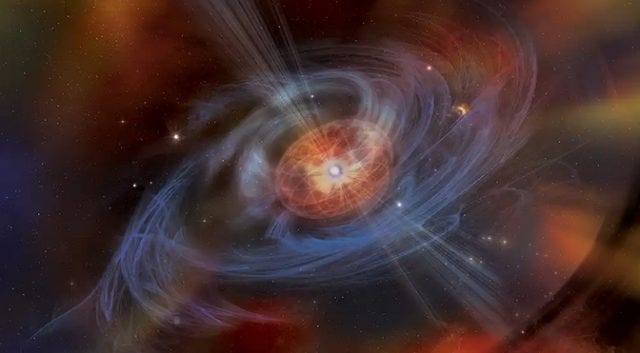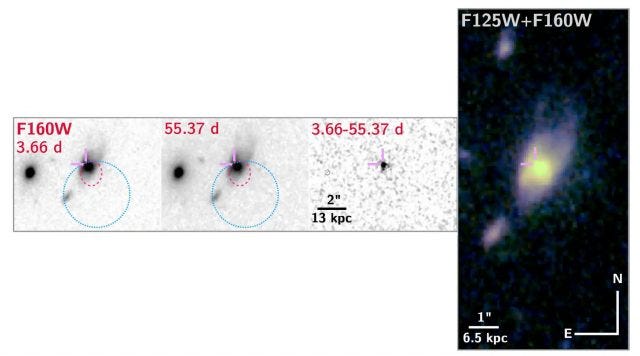# Unveiling the Birth of a Magnetar: A Kilonova Discovery
Written on
Chapter 1: The Enigma of Magnetars
Magnetars represent some of the universe's most extraordinary phenomena. These stellar remnants, classified as neutron stars, differ significantly from their quieter counterparts. Unlike most neutron stars that remain relatively undisturbed, magnetars possess magnetic fields that are billions of times stronger than that of Earth. This immense power may also be linked to the enigmatic Fast Radio Bursts that astronomers have been investigating in recent years. Until now, the birth of a magnetar had never been witnessed, but a recent high-energy event located billions of light-years away could mark this unprecedented occurrence—a kilonova resulting from the merger of two neutron stars.
Neutron stars, along with white dwarfs and black holes, frequently make headlines in the realm of stellar remnants. A star's destiny as one of these objects largely depends on its mass. The most massive stars ultimately evolve into black holes, while somewhat smaller stars become neutron stars. Our Sun, for example, is destined to collapse into a white dwarf. Depending on specific properties, a neutron star can evolve into either a pulsar or a magnetar. When neutron stars collide, they can merge and form magnetars, which is what astronomers believe they have observed.
Scientists theorize that magnetars generate their incredibly strong magnetic fields due to the presence of superconducting materials moving within. The consequences of such powerful magnetic fields are nearly incomprehensible, making the formation of magnetars an event of tremendous energy. Current theories suggest that magnetars can emerge from the collision of two relatively small neutron stars. If the stars are too massive, the resulting entity becomes a black hole; however, with the right mass, a magnetar is formed.

Section 1.1: A Pioneering Detection
In May of last year, astronomers observed a gamma-ray signal emanating from an object situated over 5.5 billion light-years away. This detection aligned with the theoretical expectations for magnetar formation, prompting global teams to focus their most sophisticated instruments on the source. Notable among these were NASA’s Swift Observatory, the Very Large Array in New Mexico, and the Keck Observatory in Hawaii. The most valuable data came from the well-established Hubble Space Telescope.
Hubble successfully captured infrared emissions associated with the creation of heavy elements like gold, platinum, and uranium. These emissions are anticipated outcomes of neutron star collisions, commonly referred to as kilonovae. The research team noted that the infrared signal was surprisingly intense—ten times brighter than previously predicted. This surprising brightness could suggest the formation of a magnetar; had the neutron stars merged into a black hole, the infrared emissions would have remained within expected limits.

Section 1.2: Implications of the Findings
This research is still undergoing validation by other scientific teams, but it has been made available on the preprint server arXiv.org. Should these findings be confirmed, it would mark the first time that the birth of a magnetar has been directly observed. The significant energy output recorded by Hubble could provide crucial insights into the mechanics of these fascinating celestial objects.
Chapter 2: The Significance of Kilonovae
In the video titled "Powerful Neutron Star Kilonova Creates Magnetar," experts explore how the collision of neutron stars can lead to the formation of magnetars, detailing the energetic processes involved.
The second video, "GW170817 Kilonova Update - Massive Magnetar From Neutron Star Merger?" delves into the implications of the recent discoveries, discussing the potential for magnetar formation as observed in the GW170817 event.
This research opens the door to a deeper understanding of how such extraordinary cosmic entities like magnetars come into existence, potentially illuminating the mysteries of the universe.